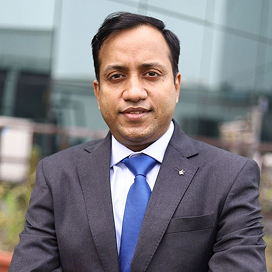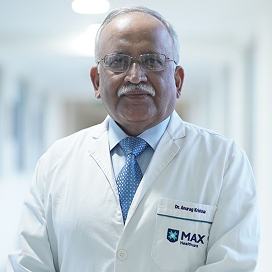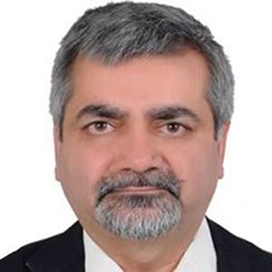Brain Tumor Removal Surgery
Brain tumor removal surgery involves the excision of abnormal growths in the brain. The primary goal of the procedure is to eliminate the tumor while preserving surrounding healthy brain tissue and minimizing neurological damage.

Types of Brain Tumor Removal Surgery
1. Craniotomy
-
The most common approach, involving the temporary removal of part of the skull to access and remove the tumor.
2. Endoscopic Brain Surgery
-
Minimally invasive surgery using an endoscope inserted through a small incision or natural opening like the nose.
3. Stereotactic Surgery
-
Uses imaging guidance (MRI or CT scans) to target and remove tumors with extreme precision.
4. Awake Brain Surgery
-
Performed while the patient is conscious to monitor brain function in real-time, ensuring vital areas remain unharmed.
5. Laser Ablation Surgery
-
Utilizes laser energy to destroy tumor cells, often for hard-to-reach or small tumors.
6. Gamma Knife Surgery (Non-Invasive)
-
A type of radiosurgery that uses focused radiation beams to shrink or destroy tumors without open surgery.
Who Needs Brain Tumor Removal Surgery?
This surgery is required for patients diagnosed with:
-
Benign (non-cancerous) or malignant (cancerous) brain tumors.
-
Symptoms caused by tumor pressure, such as headaches, seizures, or vision problems.
-
Tumors pressing on critical brain regions affecting movement, speech, or cognitive functions.
-
Tumors growing in size despite non-surgical treatments like chemotherapy or radiation.
-
Investigations Required
Before the surgery, the following diagnostic tests are conducted:
-
MRI or CT Scans: To determine tumor size, location, and type.
-
Angiography: To evaluate blood flow to and from the tumor.
-
Biopsy: Sometimes required to determine whether the tumor is benign or malignant.
-
Electroencephalogram (EEG): For patients experiencing seizures.
-
Neurological Evaluation: To assess brain and nerve function.
Line of Treatment
-
Administration of general anesthesia or, for awake surgeries, sedation as needed.
-
Placement of the patient's head in a fixed position for stability.
-
Craniotomy: The surgeon removes a portion of the skull to access the brain. The tumor is excised using microsurgical techniques, ensuring minimal impact on surrounding tissue. The surgeon makes an incision in the scalp and removes a portion of the skull (bone flap).
-
Endoscopic or Minimally Invasive Surgery: A small incision or natural opening is used to access and remove the tumor.
-
Post-Tumor Removal: The skull is sealed with the bone flap or a custom implant, and sutures are applied to close the incision.
-
Patients are moved to the ICU for monitoring and stabilization.
1. Pre-Surgery Preparation
2. Surgical Procedure
3. Post-Surgery Care
Hospital Stay
Patients typically stay in the hospital for 5 to 10 days following surgery, depending on the complexity of the procedure and the recovery progress.
Success Rate
The success rate of brain tumor removal surgery varies based on factors such as the tumor type, location, and patient health. Success rates are generally high, ranging from 70% to 90%, especially for benign tumors or early-stage malignancies.
Risks Associated with Brain Tumor Removal Surgery
While craniotomy surgery is generally safe, potential risks include:
-
Infections: At the surgical site or within the brain.
-
Bleeding or Hemorrhage: During or after surgery.
-
Neurological Complications: Temporary or permanent changes in brain function.
-
Seizures: A possible outcome post-surgery.
-
Brain Swelling: Leading to increased intracranial pressure.
-
CSF Leak: Leakage of cerebrospinal fluid.
-
Adverse Effects of Anesthesia: Rare but possible.
Post-Operative Care
-
Monitoring: Close follow-up with a neurosurgeon to monitor recovery and detect any complications.
-
Pain Management: Prescribed medications to manage headaches or discomfort.
-
Wound Care: Ensure the incision site is clean and dry; follow instructions for dressing changes.
-
Rehabilitation: Physical, occupational, or speech therapy may be required to regain full function.
-
Diet and Rest: A balanced diet and plenty of rest are crucial for recovery.
-
Restrictions: Avoid heavy lifting, driving, or strenuous activities until cleared by the doctor.
-
Signs to Report: Severe headaches, nausea, fever, or unusual swelling must be reported immediately.
Universelle Medicaid Brain Tumor Removal Surgery in India
India is a global leader in advanced neurosurgical treatments, offering cutting-edge technology and expert care at affordable prices. Universelle Medicaid collaborates with top hospitals to provide tailored treatment for patients worldwide.
Brain Tumor Removal Surgery Costs in India
| Treatment | Cost Start From ($) | Hospital Stay |
|---|---|---|
| Craniotomy Surgery | 5000-8000 | 5-10 Days |
| Brain Tumor Removal | 6000-9000 | 7-10 Days |
| Gamma Knife Radiosurgery | 8000-12000 | Outpatient |
Why Choose Universelle Medicaid?
-
Experienced Neurosurgeons: World-class specialists with expertise in brain tumor surgery.
-
Advanced Facilities: Access to the latest surgical tools and imaging technologies.
-
Comprehensive Care: Personalized attention from pre-surgery to post-recovery.
-
Affordable Treatment: High-quality care at a fraction of the cost compared to Western
Contact Universelle Medicaid today to learn more about cranioplasty and other neurosurgical treatments in India.
TREATMENTS
Neurosurgery treatment

Brain Tumor Removal Surgery
Brain tumor removal surgery involves the excision of abnormal growths in the brain...
More Information
Brain Tumor Removal Surgery
Brain tumor removal surgery involves the excision of abnormal growths in the brain...
More InformationDoctors
Our Specialist Doctors

Dr. Shashank Chaudhary
Surgical Oncology, Cancer Care



Dr. Vijayant Devenraj
Cardiac Surgery (CTVS), Thoracic



Dr. PrasoonKant Shamshery
Orthopaedics & Joint Replacement



Dr. Vikas Singla
Senior Director & Head – Gastroenterology (Pancreatic-Biliary, Luminal Gastroenterology & Endoscopy Division)



Dr. Anita Sethi
Principal Director & HOD - Ophthalmology (Max Panchsheel & Max Saket)



Dr. Anurag Krishna
Chairman - Paediatrics & Paediatric Surgery Paediatric (Ped) Surgery, Paediatric (Ped) Urology



Dr. Bipin Walia
Vice Chairman & Head- Neurosurgery for Max Saket Complex & Vice Chairman- Neurospine, Max Saket



Dr. Dinesh Khullar
Chairman - Nephrology & Renal Transplant Medicine, Max Saket Complex



Dr. H.N. Bajaj
Principal Director (Orthopaedics) & Head (Spine Surgery) Orthopaedics & Joint Replacement, Spine Surgery, Arthroscopy & Sports Injury



Dr. Harit Chaturvedi
Chairman - Max Institute of Cancer Care Cancer Care / Oncology, Thoracic Oncology, Surgical Oncology, Robotic Surgery, Head & Neck Oncology, Breast Cancer



Dr. Kulbhushan Singh Dagar
Principal Director, Chief Surgeon & Head - Neonatal & Congenital Heart Surgery Paediatric (Ped) Cardiac Surgery, Cardiac Sciences, Paediatrics (Ped)



Dr. Pradeep Chowbey
Chairman - Max Institute of Laparoscopic, Endoscopic, Bariatric Surgery & Allied Surgical Specialities



Dr. Sunil Choudhary
Principal Director & Chief of Plastic Surgery (Max Institute of Reconstructive, Aesthetic, Cleft & Craniofacial Surgery (Miracles) Aesthetic And Reconstructive Surgery



Dr. Abhishek Mishra
MBBS, MS - Orthopaedics Orthopedic surgeon, Joint Replacement Surgeon



Dr. Vineet Malhotra
MBBS | MS – General Surgery | DNB – Urology/Genito – Urinary Surgery



Dr. (Lt Col) Ashok Kumar
Senior Consultant & Head - Radiation Oncology



Dr. Aman Jyoti
Senior Consultant – Paediatrics Cardiac Anaesthesia & Cardiac Intensive Care



Dr. Amit Kumar
Associate Director & Head (Unit I) - Interventional Cardiology



Dr. Anushtup De
Senior Consultant & Head (Unit l) - General & Minimally Invasive Surgery



Dr. Arjun Goel
Senior Consultant & Head (Unit II)- General & Minimally Invasive Surgery



Dr. Dinesh Pendharkar
HOD & Director - Medical Oncology, Cancer Care, Haematology & BMT



Dr. Subhash Hakoo
HOD & Director - General & Minimally Invasive Surgery



Dr. Sujoy Bhattacharjee
HOD & Director - Robotic Joint Replacement



Dr. Tanmay Pandya
HOD & Director - Nephrology & Renal Transplantation



Dr. Ved Prakash
Senior Consultant & Head - Cardiothoracic & Vascular Surgery



Dr. Anuj Agrawal
Sr. Consultant Department of Orthopaedics & Joint Replacement



Dr. Ashwini Kumar Singh
Senior Consultant & Head Plastic, Reconstructive & Cosmetic Surgery



Dr. Nikhil Gupta
Orthopaedics, Arthroscopy & Joint Replacement Surgery



Dr. Sparshi Jain
Consultant in Department of Ophthalmology



Dr. (Maj) Ravi Shankar
Consultant - Haemato-Oncology & BMT MBBS, MD (Pediatrics) Fellowship PHO & BMT



Dr. Amrita Tiwary Vyas
Consultant, Neurosciences/Neurosurgery, Brain & Spine Specialist



Dr. Ankit Agrawal
Consultant, Neurosciences/Neurosurgery, Brain & Spine Specialist



Dr. Sudhir Sharma
Director - Minimal Access, Robotic, Bariatric and General Surgery, MBBS, MS, MBA, FIAGES, FICLS



Dr. Sujoy Bhattacharjee
HOD & Director - Robotic Joint Replacement


Book Appointment
Complete the form below to schedule your appointment.
Begin Your Health Treatment Journey with Us
By utilizing our services, you'll find it easier to improve your well-being and feel better."
Consult Now














